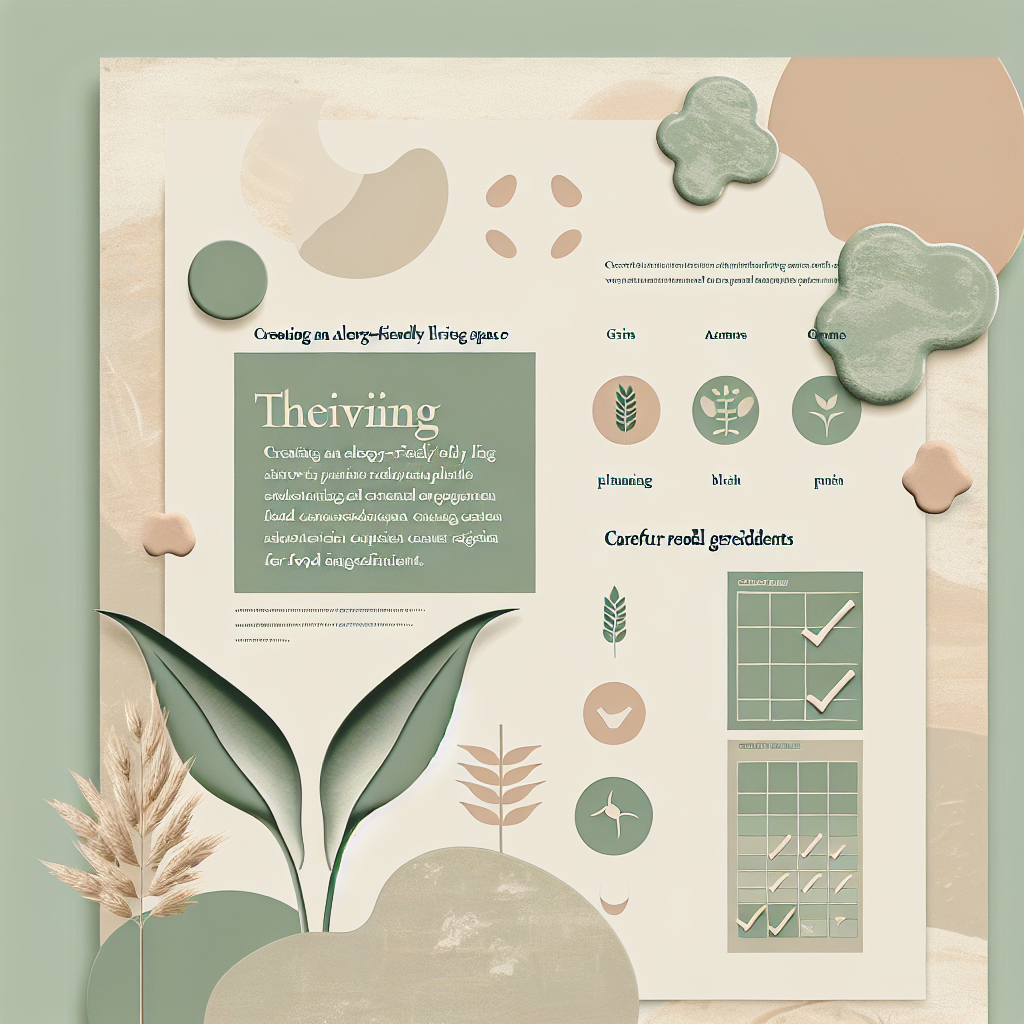Let’s set aside the flours, the bread substitutes, and pasta alternatives for a moment. Step out of the gluten-free kitchen and into the heart of the home – our living room. A place where casual conversations extend into profound discussions, our children learn to take their first steps, and we unwind from our daily pressures.
Why do I suddenly feel like chatting about design concepts and color palettes from here? Stick with me, friends, this is going to make your gluten-free life much easier! Today, we dive into the importance of keeping our living spaces clean, organized, and allergy-friendly, embracing the potent connection of our living habits to our well-being.
Now, I’m sure you’ve come across a handful of our previous blog posts (
[How to Navigate a Grocery Store for Gluten-Free Goodies](Blog_List_URL) and
[The Essential Gluten-Free Pantry Clean-Out](Blog_List_URL) are my personal favorites). Most focus on our eating habits as key to thriving gluten-free. Rightfully so, food plays a significant role, but let’s explore how our environment truly influences our health.
Decluttering and organizing your living spaces not only provides a tangible benefit for the mind, but it can also help maintain your gluten-free diet more manageable. Take the time to create a designated area in your kitchen for gluten-free products if you live in a mixed-diet household. This dedicated space will reduce the risk of cross-contamination significantly. You can apply the same principle to your dining and living room. Sharing nibbles during movie time? Be sure to have separate bowls for gluten-free and regular snacks.
Cushion covers and rugs might not be the first thing that comes to mind when you think about gluten-free living, but bear with me. These everyday household items can harbor crumbs from gluten-containing snacks. Regular washing and vacuuming can go a long way in ensuring your living space remains safe.
Few of us think about indoor air quality, but did you know that your favorite scented candles might be causing more harm than good? Some candles, particularly those made from paraffin wax, can release potential allergens into the environment. Why not opt for candles made from natural materials like soy or beeswax or use an essential oil diffuser? They’re a safer alternative and just as aromatic. Lavender, anyone?
Speaking of products that can affect your wellbeing, let’s talk about cleaning products. A lot of household cleaners contain harsh chemicals that can affect health and wellness, especially if you have a sensitive system already coping with gluten intolerance. Consider using greener options. There are plenty of all-natural cleaning products in the market. Plus, if you’re feeling a little DIY-ish (like we often do with our gluten-free recipes), you can create your own cleaning solutions using items you may already have in your pantry like vinegar and baking soda.
Oh, and while we’re talking about becoming one with nature, let’s discuss the beautiful world of houseplants. Houseplants not only add a vibrant burst of green to your living space, they also work round the clock to improve air quality by filtering harmful toxins. Certain houseplants like spider plants and snake plants are especially good at this, and bonus — they are also low maintenance!
Living in a clean, allergen-free environment is intrinsic to maintaining your health while living gluten-free. Being mindful of our space, the items we use within it, and our cleaning habits can dramatically increase the quality of our lifestyle. And with this knowledge, we don’t just survive, we thrive!
So, whether you’re sitting with a hearty gluten-free meal, watching your favorite movie, or simply enjoying the tranquility of your space, know that your actions have turned your living space into a safe haven.
Here’s to not just a healthy plate, but a healthy living room, a healthy life!
**Category: Lifestyle & Social**



